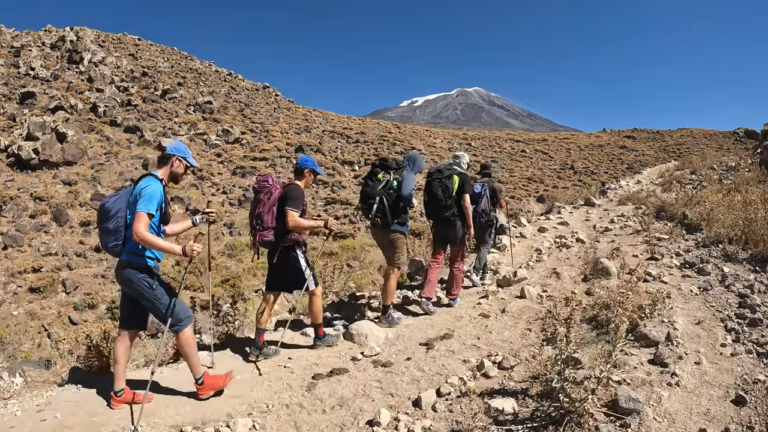Mount Ararat, a name steeped in biblical lore and geological wonder, stands as a beacon for adventurers and spiritual seekers alike. Rising to 5,137 meters, this dormant volcano in Turkey is a trek and a journey through history, culture, and challenging terrains. For those drawn to its summit, the question isn’t just why climb Mount Ararat, but how long it takes and what it takes to conquer this majestic peak.
How Many Days Should You Plan for the Climb?
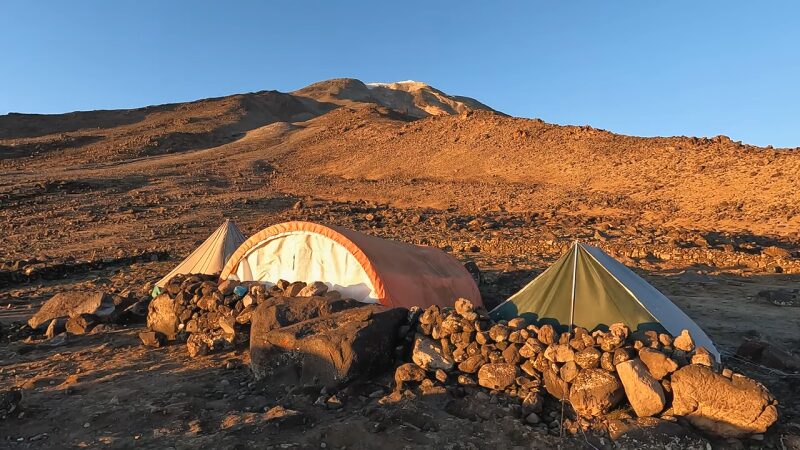
The ascent of Mount Ararat is not a sprint; it’s a marathon. Typically, the journey from base to summit spans over a four to seven-day period.
This time frame allows for essential acclimatization, which is crucial given the altitude.
- Day 1 to 2: These initial days often involve acclimatization hikes. These shorter treks are essential for adjusting to the altitude and reducing the risk of altitude sickness.
- Day 3 to 5: The following days see the climb towards the summit. Climbers usually start in the early hours of the morning (1-2 a.m.) to make the most of the stable weather conditions at dawn.
- Day 6 to 7: Descent and return to base.
For those looking for more challenging expeditions, such as ascending the Everest Nepal route, organizations like SummitClimb offer detailed guidance and services.
7 Essential Tips for Your Ascent
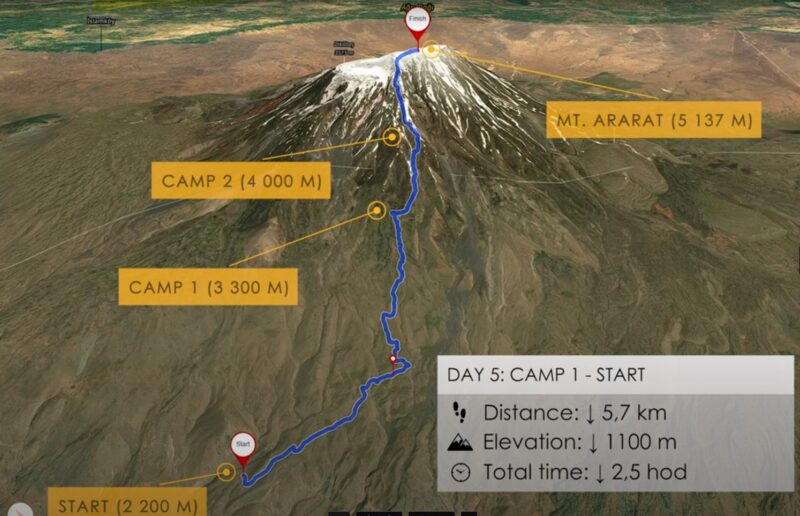
- Start Training Early: Physical fitness is key. Engage in regular hiking and cardio exercises months before the climb.
- Hire a Reputable Guide: A knowledgeable guide is invaluable, especially for navigating routes and handling emergencies.
- Listen to Your Body: Be attentive to signs of altitude sickness and fatigue.
- Stay Hydrated and Nourished: Keep a balance of hydration and energy-giving foods.
- Respect the Mountain: Remember, it’s not just a physical challenge; it’s a place of historical and cultural significance.
- Pack Efficiently: Every extra pound feels heavier at high altitudes.
- Embrace the Experience: Beyond the physical challenge, it’s a journey of self-discovery and connection with nature.
What Challenges Does the Weather Pose?
Climbing Mount Ararat is like experiencing all four seasons in a single day. The temperature variation can be extreme, with a potential 60° difference between the summit and the descent.
This temperature swing, combined with the mountain’s unpredictable weather patterns, necessitates careful planning and appropriate gear.
Acclimatization: Why Is It Vital?
Ascending too rapidly at high altitudes can lead to altitude sickness. Acclimatization walks, conducted over the first couple of days, are not leisurely hikes; they are your body’s training sessions, adapting to lower oxygen levels. Think of these walks as rehearsals before the main performance.
Choosing the Right Route
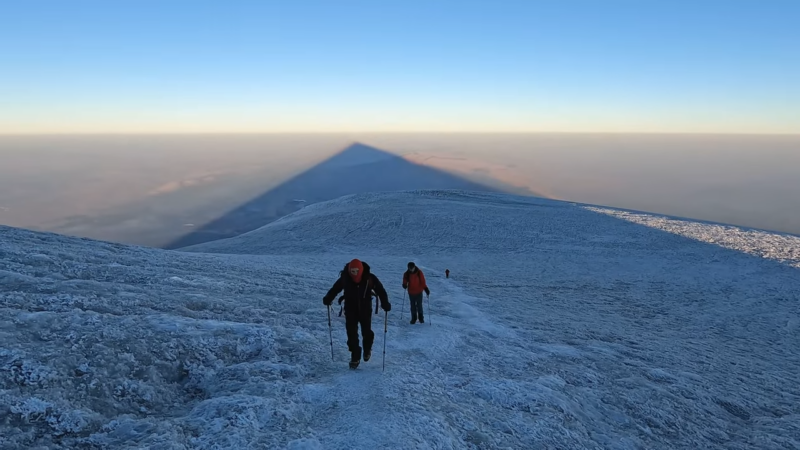
Which Acclimatization Route Should You Take?
Mount Ararat offers two primary routes for acclimatization walks:
- Northern Route: This route is often less crowded and offers a serene and more rugged experience.
- Southern Route: The more popular choice, it provides a slightly easier trek with more established paths.
Your choice will depend on your experience level and preference for solitude versus a more communal experience.
What Should Be in Your Backpack?
Packing for Mount Ararat is packing for unpredictability. Your backpack should include:
- Clothing: Layered clothing that can handle a 60° temperature swing.
- Navigation Tools: Maps, compass, or GPS device.
- Safety Gear: First aid kit, headlamp, and sun protection.
Securing Necessary Permissions
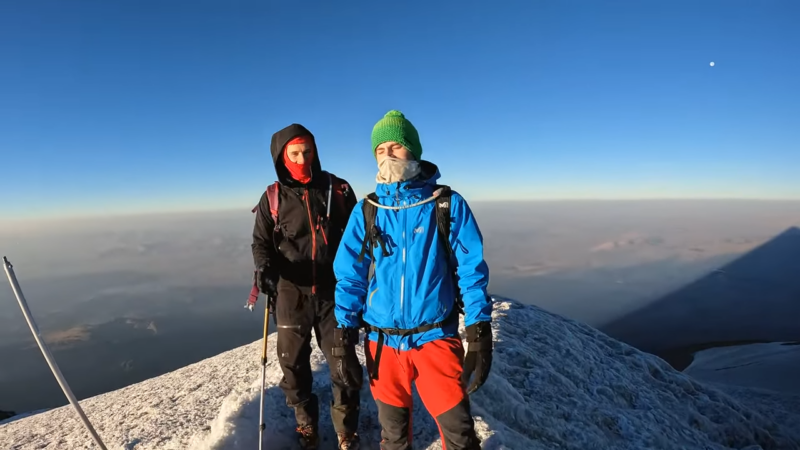
Climbing Mount Ararat isn’t a spur-of-the-moment adventure. It requires permission from the Turkish local government in Dogubayazit. This process can take time, so plan ahead.
Best Time for the Trek
Timing is crucial. The ideal months for climbing Mount Ararat are July and August. These months offer the most stable weather conditions, reducing the risks associated with high-altitude trekking.
Why Is Mount Ararat More Than Just a Climb?
Mount Ararat isn’t merely a geographical landmark, as it is a symbol etched in history and culture.
According to the Bible, it is believed to be the resting place of Noah’s Ark. This belief imbues the mountain with a spiritual aura, attracting not just climbers but also those seeking a spiritual journey.
As you climb, you’re ascending a mountain and walking through pages of history and myth.
Physical and Mental Preparation
Preparing for Mount Ararat is a dual endeavor – physical and mental.
- Physical Preparation: This includes cardiovascular training, strength exercises, and regular hiking. Your body needs to be accustomed to long walks, steep climbs, and varying altitudes.
- Mental Preparation: High-altitude climbing is as much a mental challenge as a physical one. Mental endurance, the ability to stay calm under pressure, and a positive mindset are crucial.
Altitude Sickness – How to Recognize and Prevent it?
Altitude sickness can be a major hurdle. Symptoms include headache, nausea, and dizziness. Prevention is key:
- Gradual Ascent: Don’t rush. Allow your body to adapt to the altitude.
- Hydration: Drink plenty of water.
- Acclimatization Hikes: Utilize these for gradual adjustment.
What to Expect on Summit Day?
The final push to the summit of Mount Ararat begins in the early hours. It’s a surreal experience, climbing under the starlit sky, and witnessing the first light of dawn break over the horizon.
The summit day is challenging but also the most rewarding. Imagine standing atop the highest peak in Turkey, with the world unfolding beneath you – it’s an unparalleled feeling.
Why Is the Descent Just as Important?
The descent is a time for reflection. It’s not just a physical return but a mental and emotional journey. It’s a time to absorb the magnitude of what you’ve accomplished and the lessons learned.
FAQs
Do I need any technical climbing skills to ascend Mount Ararat?
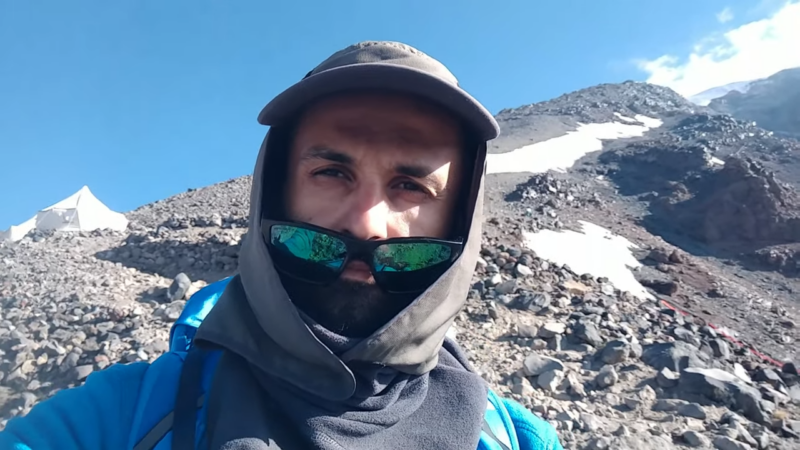
No, technical climbing skills are not required. It is primarily a trekking mountain, but good physical fitness and stamina are essential.
Are there any cultural practices or norms I should be aware of when climbing Mount Ararat?
Yes, it’s important to respect local customs and traditions. For instance, dressing modestly and asking for permission before photographing local people are considered respectful practices.
Is a visa required for climbing Mount Ararat, and how do I obtain it?
Yes, most travelers will need a visa to enter Turkey. You can apply for an e-Visa online before your trip, which is a straightforward process.
What is the best way to train for the Mount Ararat climb?
Training should include cardiovascular exercises, strength training, and regular hiking, preferably on varied terrains and elevations to simulate the conditions of Mount Ararat.
Can I climb Mount Ararat solo, or is it mandatory to be part of a guided tour?
It is mandatory to climb Mount Ararat as part of a guided tour. Solo climbs are not permitted due to regulations and safety concerns.
Final Words
Climbing Mount Ararat is a test of endurance, patience, and respect for nature. It’s a journey that takes anywhere from four to seven days, traversing diverse weather conditions and challenging terrains.
With the right preparation, respect for the mountain’s cultural significance, and adherence to safety protocols, this climb can be a transformative experience. Remember, it’s not just about reaching the summit; it’s about enjoying the journey and embracing every step of this ancient and majestic trail.
Related Posts:
- How Long Do The Catacombs In Paris Take To Explore?…
- How Long Is Too Long without Sex in A Relationship?…
- Does It Snow in Moab, Utah? Snowflakes Take Over!
- Do Walking Palm Trees Truly Take a Stroll? Unveiling…
- How to Get Long-Term Disability – Your Employer's…
- Olive Oil Shelf Life: How Long Does It Last – Storage Tips

